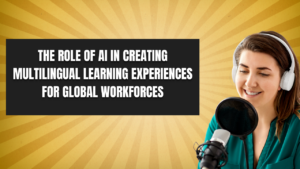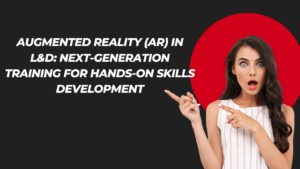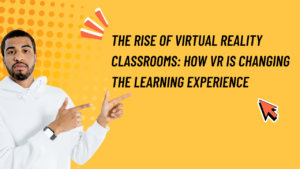As we progress into 2025, the landscape of Learning and Development (L&D) is evolving rapidly, driven by technological advancements and shifting workforce needs. This blog explores the key trends that will shape L&D strategies over the coming year, equipping professionals with insights to enhance their training programs and foster a culture of continuous learning.
Top 10 Learning & Development (L&D) Trends in 2025
1. AI-Powered Learning Environments
Artificial Intelligence (AI) is set to revolutionize L&D in 2025. AI-driven tools will enable organizations to create hyper-personalized learning experiences tailored to individual employee needs. By leveraging data analytics, L&D professionals can assess learner preferences and performance, allowing for real-time adjustments to training content. This shift towards AI-powered learning environments not only improves engagement but also enhances knowledge retention and application.
2. Continuous Learning Culture
The concept of a continuous learning culture is gaining traction as organizations recognize the importance of integrating development into everyday work activities. This approach emphasizes ongoing skill enhancement rather than isolated training sessions. By fostering an environment where employees are encouraged to learn continuously, organizations can better adapt to changing market demands and technological advancements.
3. Skills-Based Training
With the widening skills gap across industries, there is a noticeable shift towards skills-based training. Organizations are focusing on developing specific competencies that align with both business objectives and individual career aspirations. This trend not only helps close skills gaps but also promotes employee growth through targeted upskilling initiatives. In 2025, expect a significant emphasis on identifying and nurturing key skills that drive organizational success.
4. Immersive Learning Experiences
Technologies such as Virtual Reality (VR) and Augmented Reality (AR) are transforming traditional training methods into immersive learning experiences. These technologies allow employees to engage in realistic simulations, enhancing their practical skills in a controlled environment. As immersive learning becomes more prevalent, organizations can expect improved knowledge transfer and retention among employees.
5. Just-in-Time Learning
The demand for just-in-time learning—training that is available on-demand—continues to rise in 2025. Employees increasingly seek actionable knowledge that they can access when needed, rather than participating in lengthy training sessions. This trend aligns with the fast-paced nature of modern work environments, where immediate access to relevant information can significantly impact productivity and performance.
6. Emotional Intelligence in a Tech-Driven World
In an era dominated by technology, the importance of emotional intelligence (EI) cannot be overstated. As organizations embrace digital tools, there is a growing recognition that soft skills—such as empathy, collaboration, and communication—are essential for effective teamwork and leadership. L&D programs in 2025 will increasingly focus on developing EI alongside technical skills, ensuring employees are well-rounded and capable of thriving in diverse work environments.
7. Data-Driven Decision Making
The integration of data analytics into L&D strategies is becoming critical for measuring training effectiveness and aligning learning initiatives with business outcomes. In 2025, organizations will prioritize data-driven decision making, utilizing metrics such as Return on Investment (ROI), employee performance improvements, and retention rates to assess the impact of their training programs67. This approach enables L&D leaders to make informed adjustments to their strategies based on tangible results.
8. Engaging Remote and Hybrid Workforces
With remote and hybrid work models becoming the norm, L&D professionals face the challenge of creating engaging learning experiences for diverse work settings. Innovative digital delivery methods—such as interactive e-learning modules, virtual workshops, and collaborative platforms—will be essential for keeping remote employees engaged and motivated to learn56. In 2025, expect an increased focus on creating inclusive learning environments that cater to various preferences across generations.
9. Leadership Development Takes Priority
As companies navigate complex challenges in a rapidly changing world, leadership development will take center stage in L&D initiatives for 2025. Organizations will invest more resources into cultivating leadership skills at all levels, recognizing that effective leaders are crucial for driving organizational success and fostering employee engagement67. Programs aimed at developing strategic thinking, adaptability, and resilience will be prioritized.
Conclusion: Embracing Change in Learning & Development
The trends shaping Learning & Development in 2025 reflect a broader shift towards agility, personalization, and continuous improvement within organizations. By embracing these trends—such as AI-powered learning environments, continuous learning cultures, and immersive training experiences—L&D professionals can position their organizations for success in an ever-evolving landscape.
As we move forward into this new era of workforce training, it is essential for L&D leaders to remain adaptable and open to innovation while prioritizing employee growth and engagement at every level. By doing so, they will not only enhance individual performance but also contribute significantly to organizational resilience and success in the future workplace.









